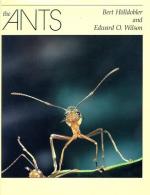
|
| Name: _________________________ | Period: ___________________ |
This test consists of 15 multiple choice questions and 5 short answer questions.
Multiple Choice Questions
1. Which of the following ant species is the most specialized granivore?
(a) Messor Pergandei.
(b) Atta Cephalotes.
(c) Pheidole Pallax.
(d) Acanthomyremex ferox.
2. In what part of the ant's anatomy are the unicellular glands?
(a) The head.
(b) The thorax.
(c) The abdomen.
(d) The antennae.
3. Which of the following insects are harvested in "ranches" by ants?
(a) Honeybees.
(b) Aphids.
(c) Katydids.
(d) Fleas.
4. How many varieties of ant-plant symbiosis are categorized in this chapter?
(a) 37.
(b) 7.
(c) 27.
(d) 17.
5. In a weaver ant community, which of the following is the only group of ants exempt from nest building duties?
(a) Major workers.
(b) Minor workers.
(c) Queens.
(d) Larvae.
6. Which of the following is not a myrmecophile noted in the text?
(a) Flies.
(b) Beetles.
(c) Locusts.
(d) Wasps.
7. Which of the following is NOT a behavioral category for myrmecophiles?
(a) Trophobionts.
(b) Tetrophobiants.
(c) Synoeketes.
(d) Symphiles.
8. Which of the following body parts are NOT affected by formicosis?
(a) Lungs.
(b) Nose.
(c) Bronchials.
(d) Throat.
9. According to Wilson, which of the following ants is best to study and preserve?
(a) Workers.
(b) Larvae.
(c) Reproductive queens.
(d) Virgin queens.
10. How old must an Eciton army ant be to reach sexual maturity?
(a) At least one week old.
(b) At least one month old.
(c) At least one day old.
(d) At least one year old.
11. Which of the following chemicals do Wilson and Holldobler use on ant specimens?
(a) Ether.
(b) Ergonovine.
(c) Ethelymine.
(d) Ethanol.
12. Which of the following is NOT part of mutualism within ant-plant symbiosis?
(a) Fungi.
(b) Ant parasites.
(c) Myrmecophyte.
(d) Microorganisms.
13. Which of the following words is used to describe an ant swarm?
(a) Tivouac.
(b) Bivouac.
(c) Divouac.
(d) Givouac.
14. When Wilson wrote about studying harvester ants and the Old Testament, where was he located?
(a) India.
(b) Israel.
(c) Persia.
(d) Syria.
15. Which of the following types of symbiosis does NOT deal with nest sharing?
(a) Plesiobiosis.
(b) Lestobiosis.
(c) Inquilinism.
(d) Cleptobiosis.
Short Answer Questions
1. How many species of ants were represented in the ant mosaic of Queensland, Australia?
2. How long can ants be stored in alcohol?
3. Where was Wilson heading when he was desperately trying to get a hold of Le Pouce to perform a specialized predator field study?
4. What does the red ant, Proceratium, forage for?
5. Which of the following is the most common type of plant-ant symbiosis?
|
This section contains 360 words (approx. 2 pages at 300 words per page) |

|




